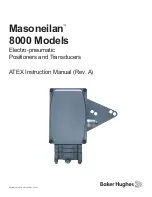
180
BARRETT PRC-4090 TACTICAL HF SDR TRANSCEIVER - INSTALLATION
Ground (Earth) System
The ground (earth) system is a key part of the overall antenna system and con-
sequently the system operation. An inadequate ground (earth) system is the
primary cause of poor performance and tuning problems. There is little point
in installing the antenna unless a good ground (earth) system or counterpoise
can be provided.
Metal hulled vessels provide an almost perfect ground (earth). The tuner ground
(earth) terminal should be connected directly to the hull using the shortest
possible ground (earth) strap. The point of connection to the hull should be
prepared so that it is free of paint and rust to ensure a good contact area with
minimum electrical resistance.
Wooden or fibreglass vessels present more of a problem to ground (counter
-
poise). Ideally the vessel should be fitted with an external copper ground (earth)
sheet, connected to the interior of the vessel by suitable stud or an ground
(earth) plate (“E” plate Barrett P/N BCA91700)
Should neither of these methods be available it will be necessary to bond as
many large metallic objects, such as the engine and propeller shaft, together to
form a ground (earth).
Whichever method is used the ground (earth) run from the ground (earth) plate
to the antenna tuner should be as short as possible and use copper strap at
least 50 mm wide (wider if available). Consideration must always be given to
the problem of electrolysis. Severe structural damage may occur if electrolysis is
present. Consult your maritime experts for more information concerning elec-
trolysis.
Corrosion
All connections in marine situations are subject to corrosion and oxidation. To
minimise this all joints should be cleaned and have silicon grease applied before
assembly. Under severe conditions joints should be protected with self vulcan-
ising rubber tape.
Electrical Checkout
After mechanical installation is complete, select the highest frequency to be
used on the transceiver. A directional watt-meter may be inserted in the coaxial
transmission line between the transceiver and the tuner, if desired, although the
internal tuner of the PRC-4090 transceiver is accurate. The tune mode on the
transceiver is then activated (see page 107). Upon application of RF energy,
the tuner should start to tune, indicated by the ‘clattering’ of the tuner relays.
After a few seconds the relay noise will cease. The transceiver should indicate
“Tune OK” and the watt-meter reflected power should indicate a low value con
-
sistent with a VSWR of better than 2:1. Select the lowest desired frequency on
















































